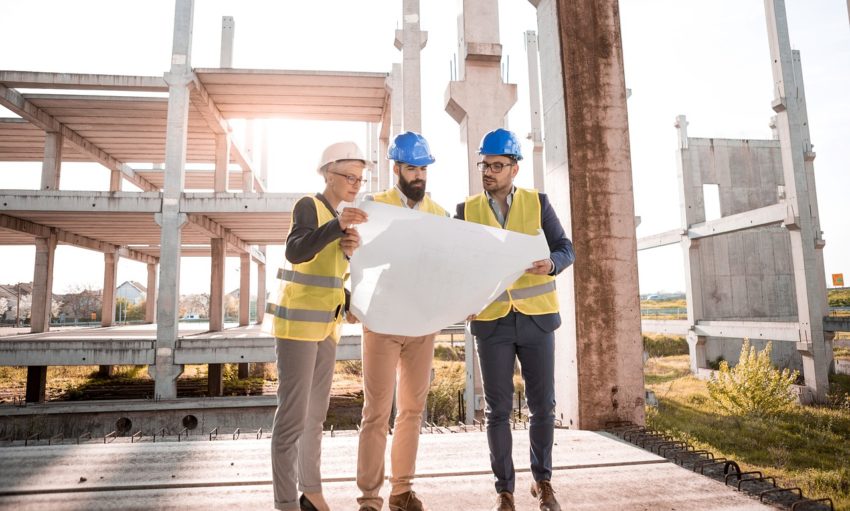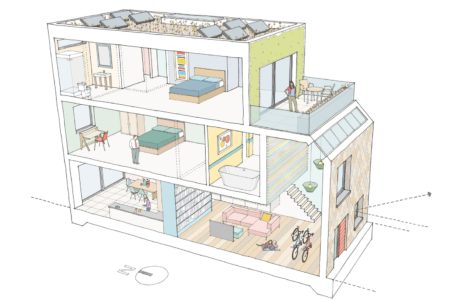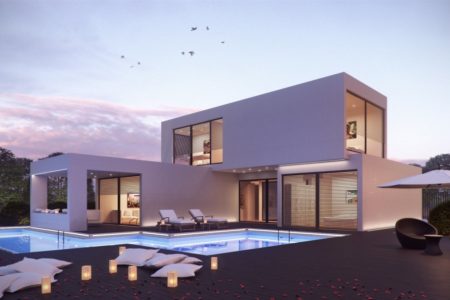
Share On Social!
Architecture can influence many aspects of health, including body temperature and allergies — even our mental health.
From window placement to floor design, how buildings are laid out will influence the way a person feels. More importantly, this influence can impact the day-to-day lives of people, according to Ben Channon, a U.K. architect and author of “Happy by Design.”
“We spend 80% of time indoors, but we give little thought to how bricks and mortar impact us physiologically,” Channon told Planning, BIM & Construction Today. “Most building design prioritizes cost efficiencies and overheads, rather than paying attention to the nuances of human experience.”
Design, Characterless and Inexpensive
Whether a room is small and cozy or large and grandiose, it can shift aspects of mental health, especially depression and anxiety.
Other design factors, including indoor air quality and lighting, will not only have an impact on physical health but mental wellness, too, according to the 2003 research article “The Built Environment and Mental Health.” 
“The built environment has direct and indirect effects on mental health,” the study states. “Highrise housing is inimical to the psychological well-being of women with young children. Mental health of psychiatric patients has been linked to design elements that affect their ability to regulate social interaction. Alzheimer’s patients adjust better to small-scale, homier facilities that also have lower levels of stimulation.”
Without taking the human experience at-large into consideration, architects and building designers lose why these structures are being designed — for everyday use by people.
“I think the potential dangers now are the risk of creating buildings and homes that lack soul with a move towards kind of manmade technologies such as plasterboard and laminate flooring, rather than more traditional, tactile materials, that engage our senses,” Channon told Archinect.
“There’s obviously a concern that cost is a big driver, and I suppose it always has been—people costing out high ceilings or large windows, or whatever it may be. All of those things, if we’re not careful, are going to result in buildings that might be very efficient, but it’s vital we also take into account how people are going to feel inside them. I suppose really that’s what it comes down to—it’s about getting a balance between efficiency, happiness, and quality.”
Solutions, Innovative and Rounded
Many existing spaces failed to consider mental health factors, but there are ways to improve going forward.
The American Institute of Architects highlights happiness as a critical area of holistic building design.
They relate a few key ways to improve mental health-focused design:
- Variety: “This is best experienced over time rather than all at once. For an abstract example, one room that can transform and create a different experience each month is better than 12 different rooms that remain static.”
- Sense of control: “This can be as simple as being able to open a window or adjust a thermostat. Think about flexible spaces that can be individually manipulated and provide options to experiences different environments. Generally, more choices—even if additional choices are unlikely to be chosen—will increase perceived control.”

- Self-actualization: “This is the realization and fulfillment of an individual’s feeling of self-purpose. Achieving self-actualization requires an environment free of nuisances and distractions (glare, disrupting noises, thermal discomfort, poor air quality, etc.).”
- Authenticity: “This can be accomplished by referencing culturally meaningful ideas will make people more likely to value an experience. This also helps root a project in the community, celebrating a unique sense of place.”
It is crucial to consider the whole human experience when creating spaces for people to work, play, and live, according to Alain de Botton, an architect and author of “The Architecture of Happiness.”
“And I think the beautiful things are things of the moment,” de Botton told NPR. “You know, you’re passing through a room. You happen to appreciate the way the wooden floorboards are arranged or something. So, I think that there’s – in a way, people who put their faith in architecture have to remember that it’s not a faith akin to, I don’t know, trying to restart the world anew or create a revolution or something. It’s a modest ambition, a very, very important ambition, but a modest one.”
Editor’s Note: This is Part Four of a series on building for holistic health. Read Parts One, Two, and Three. This article is part of a collaboration between Salud America! and the Hoffman Toxicant-Induced Loss of Tolerance (TILT) program at UT Health- San Antonio. To find out if you experience TILT from everyday food, chemical, or drug exposure, take a self-assessment or learn more about TILT.
Explore More:
Chemical & Toxic ExposureBy The Numbers
1
Quick Survey
Can help you find out how chemically sensitive you are



